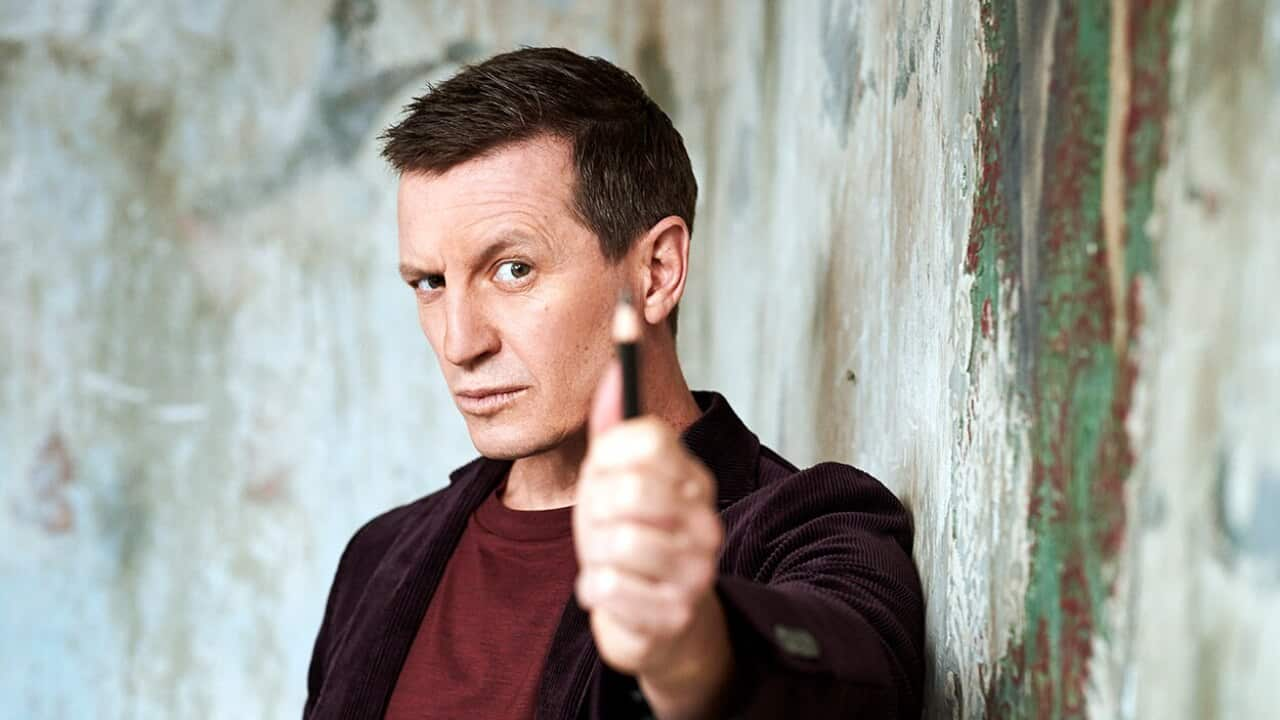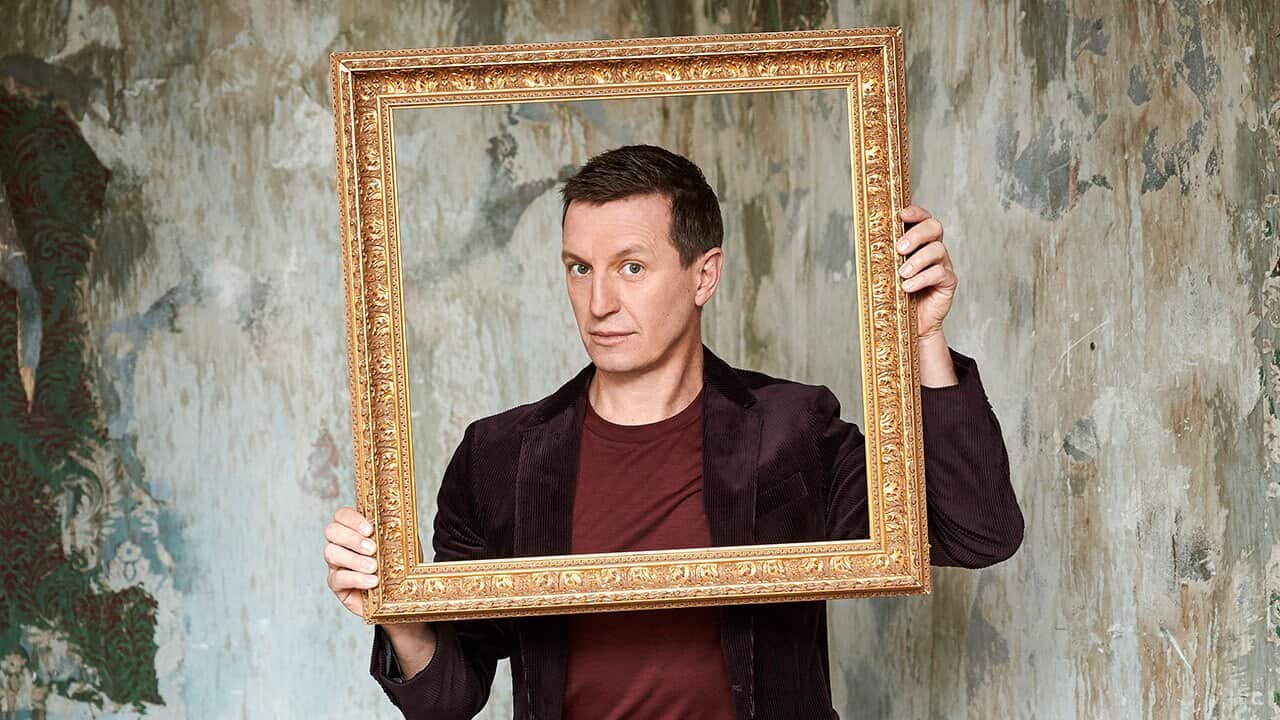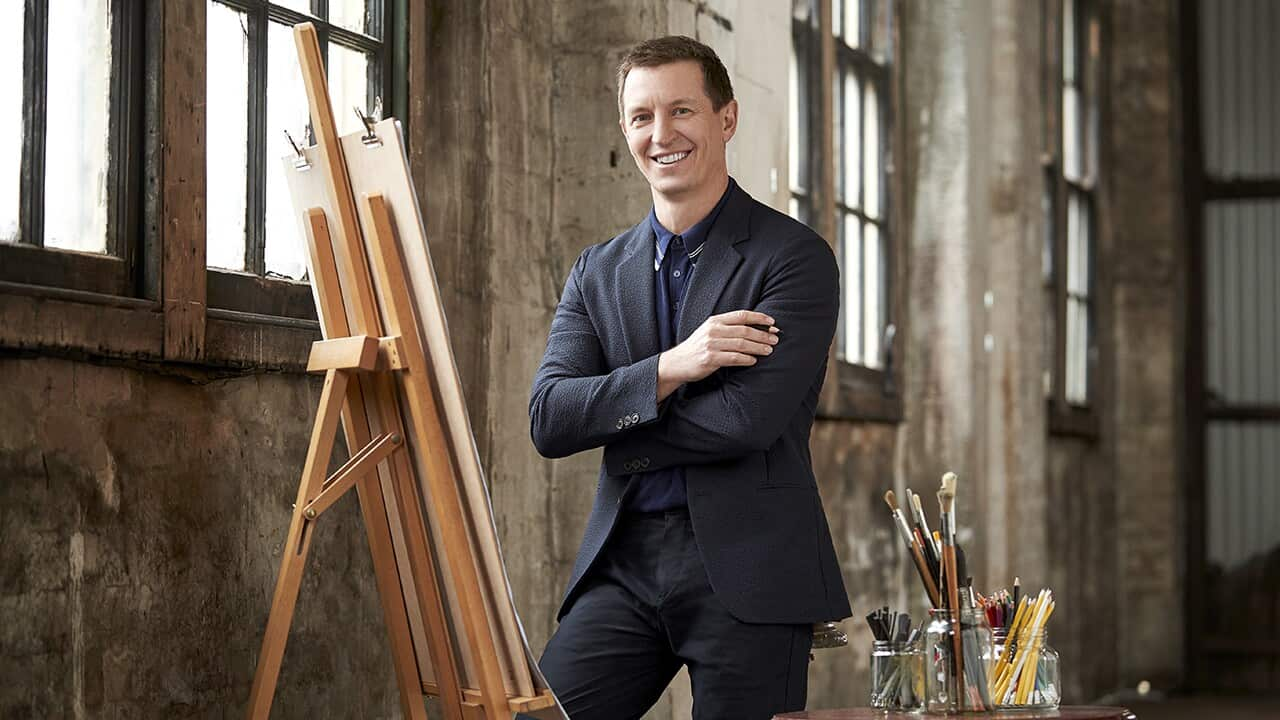As the will corral a group of amateur artists for a masterpiece two-hour live TV event on Saturday, 4 July at 8.30pm, tasking them with capturing the unique likeness of a group of life models. He wants you to embrace that early lockdown ambition to learn a new skill (don’t worry, we didn’t get far with that either) and see if you can strike a pose on paper at home.
Notable figures from the Australian arts scene will be on hand on the night, but if you want a sneaky head start, we chatted to one of those experts, practising artist, still-life lover and Head of Drawing at the National Art School, .
“We are all fascinated by human bodies,” she says. “I’ve got three brothers, two of them are engineers now, and when I was a kid, and we would play Lego, they’d do buildings, but I was always trying to make figures.”
Capturing the true likeness of the human form is an emotional task, she says. “How a body conveys that sort of magical thing of what it is to be alive, and to have the opportunity when someone is generous enough to take their clothes off and let you just really look at them. It’s a real privilege.”
Here are Coutts’ top tips for making magic happen.
1. What if I’m overwhelmed by the blank canvas?
I still get frightened by a blank piece of paper. Some people start with paper that’s not completely blank, that has maybe a bit of texture or something.
2. Should I go for a head start?
No, I wouldn’t start from the head down. The main thing is that you don’t get lost in the detail, so it’s really helpful to start from general and then go to specific. If you’re looking at a figure, try and take in the whole at once, the general shape, the direction. If there’s an arm raised, look at the way the energy moves through the whole page. Start with something central and go to the guts of it before you look at fingernails and eyelashes.
3. How do I get the balance right?
When a figure’s standing upright, it can be really hard to have that sense of gravity on the page. And so it’s about looking at those relationships between the various parts, and very often the nose and the toes. That takes your eye across the whole figure, working out how those parts relate to each other.
4. Should I measure up?
We’ll be talking about how you measure on the show. But yes, it’s the same thing. You never look at an arm separate to the body. In the past, there have been classical ideals of how many heads fit into the body, but bodies aren’t like that. They’re all different. You can hold something up against the head, then count how many times that fits in the torso or whatever, so it’s really taking the scale of one thing against the other. 5. So it takes all shapes and sizes?
5. So it takes all shapes and sizes?

'Life Drawing Live' will share tips and techniques for capturing the human form Source: cottonbro via Pexels
Yes, artists always love to look at lots of different people. Models bring all sorts of things to the life drawing room. So yeah, it’s really important to have a good range.
6. How do I get the details right once I’ve got the general drift?
Don’t get bogged down in them. One of the biggest mistakes I see students make is that if one part’s wrong, they just keep drawing that bit and forgetting about the rest. So I suppose it’s about being able to keep the drawing open to changes the whole time, rather than locking anything down.
7. What if I get nervy about the, errrrrm, more delicate bits?
That’s a really good question, because actually it’s all the same. You’ve got to forget what you’re looking at, whether it’s a nose or whatever. Don’t think about the part, focus on the what sort of shapes and forms you see. So abstracting it a little bit.
8. What bits freak most folks out?
People tend to find heads, hands and feet tricky, but I think it’s because we have preconceptions about what they should look like. You get caught up in that idea of what you can’t do. Also, we talk a lot about what we call foreshortening. That’s where an arm or whatever is coming towards you. It’s going to be a lot shorter and narrower than you think. So it might not necessarily be the body parts that are difficult, but the angles of them or the direction you’re looking at them from. 9. What’s your favourite part to draw?
9. What’s your favourite part to draw?

Drawing is fun! Source: Calmettes/BSIP/Universal Images Group via Getty Images
My colleagues laugh at me because I get so passionate about negative shapes. The spaces between things, that holds everything together. While we’re tempted to look at a finger, if you look at the shapes around those parts, we’re much less conditioned to assume what they look like. So that helps us to see in different ways.
10. What should I draw with?
I think charcoal is really good for people starting out just because it’s really easy to change, and being able and willing to change your drawing as you go through is good. With pencil, we tend to draw very small, but drawing bigger really lets people be a bit more expansive, and gives you more room to explore the different aspects of the body. So charcoal and paper as big as you can.
11. Can I use my tablet?
Yes, there are lots of options with a lot of different apps. The thing I’d say, though, is that when you’re using a tablet, you can have a lot of control and it can be tempting to try and make it perfect. But there are charcoal-type tools and you can make your eraser not fully opaque, leaving traces of the changes you’ve made.
12. So it’s okay to leave mistakes on the page?
Absolutely. It’s the changes and the human touch that really give a drawing life and energy. That’s why I’ve devoted so much of my time to drawing, because it really does give you that insight into an artist’s process. So I’d really discourage people from trying to get rid of that process altogether.
13. Will Life Drawing Live be different to being in the same room as the models?
We’re going to try and reproduce the process as much as possible, but the fact there’ll be a camera between you and the model really changes things. When you’re in an actual space with them, you’re taking in a three-dimensional form. So every time you look, you’ve got much more information than a shot from a single camera. That’s something I’ve seen over time from the younger generation. They spend so much time in the virtual world that actually drawing from something that’s physically in the space with you becomes quite unusual. But I think because of that, it becomes even more important.
*interjection from cranky SBS management*
14. Righto, but starting off with Life Drawing Live is a good idea, right? RIGHT?
Absolutely. It’s a fantastic opportunity to see what this process is like, and because we will be in the same space, you’ll still be seeing people who are drawing that way. Then hopefully, if people enjoy it, they’ll investigate other options for pursuing it in the real world.
15. So partners, flatmates, pets and possibly landlords are going to be press-ganged into life modelling now?
It doesn’t have to be kit off. And you don’t need a partner, because you can draw yourself in the mirror, which is the best, most reliable and free model you could possibly access.
Life Drawing Live premieres Saturday 4 July, 8.30pm on SBS and SBS On Demand. It streams live across Australia on SBS On Demand and live on SBS at 8.30pm AEST with a delay in WA, NT and SA. A Pose Cam will be available as a separate stream, for those drawing along at home. Full details at .
Follow the author here:



